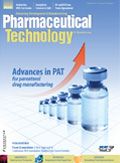Regulatory Roundup
A roundup of regulatory news from across the global pharmaceutical industry.
Identifying quality
When drugs and biologics are in short supply or carry high prices, physicians and other providers appear willing to purchase medicines from unknown sources, ignoring the possibility that those products might be adulterated, counterfeit, or ineffective. One response from FDA officials is to devise a method for identifying products that meet quality standards. If such a designation translated into higher sales, that would prompt manufacturers to invest more in improving production facilities, particularly those that make sterile injectable products, according to Janet Woodcock, director of the Center for Drug Evaluation and Research (CDER), and Marta Wosinska, director of CDER's economics staff. Writing in "Clinical Pharmacology and Therapeutics," the regulators describe how generic-drug makers compete on price, and not quality, because purchasers consider all generics equally effective and safe and often cannot link safety problems to specific products or patients (1). Thus, the market fails to reward product quality and encourages manufacturers to reduce costs by minimizing investment in quality production. FDA's proposal is to provide buyers and payers with "meaningful manufacturing quality metrics," similar to quality measures used to grade restaurants, create HMO scorecards, or identify vitamins that meet United States Pharmacopeia criteria.
More counterfeits
Despite all the publicity and alerts warning against the purchase of fraudulent and unapproved medicines, FDA recently uncovered more fake versions of Roche's cancer drug Avastin (bevacizumab) circulating in the US healthcare system. The drug is being distributed by Medical Device King (also known as Pharmalogical), and lab tests show that some batches have no active ingredient. FDA admonished doctors to be wary of medicines carrying deep discounts that appear "too good to be true." They're probably counterfeit, and the federal government is putting distributors in jail and bringing charges against physicians who knowingly buy the drugs.
Help with better labels
An FDA rule adopted in 2006 called for manufacturers of drugs and biologics to update the labeling on new and recently approved products so that prescribing information is clearer and more useful for health professionals. Unfortunately, only 15% of all drugs and biologics have adopted the Physician Labeling Rule (PLR), largely because it only applies to therapies approved after June 2001. Generic drugs get a pass, moreover, unless the innovator changes its label, which has not occurred for many older products where brands are no longer on the market. To spur broader adoption of the PLR format, CDER is offering to provide manufacturers with draft PLR labeling and assistance in converting to the new labeling format. CDER announced the proposal in the Feb. 6, 2013 Federal Register and seeks comments on how best to help industry with labeling conversion (2).
Real-time safety surveillance
FDA is building on its Mini-Sentinel system for monitoring the safety and performance of drugs after the drugs come to market by shifting to the full Sentinel System envisioned by 2007 FDA legislation. The plan is to establish a "sustained active surveillance system" that can serve as a "national resource" for assessing multiple healthcare issues, explained CDER's Janet Woodcock at the 5th Sentinel Initiative Public Workshop in January 2013. Mini-Sentinel has operated through a distributed database model that obtains answers to drug-safety questions from a network of healthcare data systems. Over the past five years, the program has established core operations, research methods, and protocols for testing drug safety evaluations. With the expiration of the mini-sentinel program at the end of 2014, Woodcock envisions a broader consortium, which may include pharmaceutical manufacturers that can access data from the current system and additional sources to support product quality. Further methodological research will explore ways to ensure that results from Sentinel operations are valid and that Sentinel supports "the public good."
Sunshine at last
The aim of the long-awaited federal "Sunshine" rule, issued Feb. 1, 2013 by the Centers for Medicare and Medicaid Services (CMS), is to prevent undue industry influence on prescribing and biomedical research by requiring manufacturers to report all payments and "transfers of value" to physicians and teaching hospitals. Enacted as part of the Affordable Care Act (ACA) of 2010, the Sunshine program took nearly two years to finalize, largely because doctors protested that disclosure of payments from pharmaceutical and medical device companies would be misleading and taken out of context. The final rule sets timeframes and specifics for manufacturers to file information with CMS on payments for research activities, consulting fees, gifts, meals, travel costs, and speaking fees, plus ownership and investment interests of a doctor and his family in an "applicable manufacturer." CMS gave doctors a few extra days to review and challenge industry data before posting the data on its website, and manufacturers are expected to avoid such disputes by establishing electronic "aggregate spend" tracking systems that permit them to share and confirm payment data with recipients prior to CMS filing. With all the delays, manufacturers now have until March 2014 to report payment data for August through December 2013, and the data won't be posted until September 2014. It remains to be seen if "Sunshine" discourages physicians from serving as investigators in commercial clinical trials or as consultants or advisors to manufacturers.
References
1. "Clinical Pharmacology and Therapeutics," posted on Nature.com (Jan. 23, 2013), www.nature.com/cpt, accessed Feb. 14, 2013.
2. Federal Register, Vol. 78, No. 25, pp. 8446-8.

Pharmaceutical Tariffs Are Imminent: How Industry is Bracing for Impact
April 16th 2025On April 14, 2025, the Trump Administration launched a national security-driven investigation into pharmaceuticals, a move that will likely result in tariffs being placed on pharmaceutical drugs, ingredients, and other components that are imported from outside of the United States.